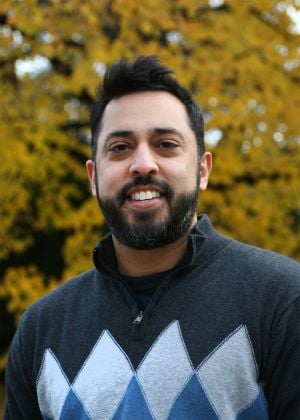Neuroimaging identifies why children demonstrate better language outcomes after brain injury
Summary:
SickKids research shows that age-related changes in how the brain supports language predict outcomes following a brain injury.
Researchers at The Hospital for Sick Children (SickKids) have shown, for the first time, why children are more likely than adults to retain language skills after certain brain injuries.
Previous research has documented that the language networks of children are more resilient after experiencing focal brain injuries (traumatic injuries that occur in a single location in the brain). Until now, this “paediatric advantage” has not been well understood.
Using a technology called magnetoencephalography (MEG), senior author Dr. Darren Kadis, a Scientist in the Neurosciences & Mental Health program and Director of the Research Magnetoencephalography (MEG) Facility, explains that mapping the brain’s language network – a connected map of neurons that communicate to process and express language – can provide insight into the mechanisms of the long-recognized paediatric advantage.
In a study published in Nature Communications, the research team found that in a child’s brain, the language network is full of redundancies, meaning that an injury in one area may not significantly impact the network’s overall function. By contrast, the adult language network is relatively specialized, with fewer redundancies. Though more efficient, this makes the adult network relatively vulnerable to injury.
On the publication of these findings, Kadis shares some insights on the important role neuroscience played in unpacking why focal brain injuries can have more severe consequences in adulthood than in children.
What is the “paediatric advantage”?

For some cognitive domains, such as language, early focal brain injury is less detrimental than injury experienced later in life. This is often referred to as the paediatric advantage. The phenomenon, however, is not universal; for some domains, early injury leads to relatively severe and lasting impairment.
In my lab, we study factors predicting paediatric language representation by mapping the regions of the brain that support various language processes. We look at the network’s performance and functionality in both health and disease. With our work, we hope to gain a better understanding of the paediatric advantage for language and identify individual factors that can be used for predicting outcomes and future diagnosis.
What is the significance of this research?
For nearly 30 years, neuroimaging has shown that gross language functions are supported by a bilateral and diffuse network in early childhood, becoming increasingly left-lateralized and specialized, through adolescence. This ‘shift’ in representation was thought to underlie the paediatric advantage – presumably, a relatively extensive network that uses multiple parts of the brain is less vulnerable to a focal injury.
This is the first paper to describe mechanisms for the paediatric advantage from a network neuroscience perspective. We have also introduced an analytic framework that can be used to study resilience/vulnerability across a range of cognitive domains and hopefully improve the precision of noninvasive language mapping for children undergoing neurosurgery and minimize morbidity.
Where does the research go from here?
Moving forward, we plan to evaluate the utility of network vulnerability mapping in the brain and identify critical sites that must be preserved for that network, like language, to continue functioning.
Likewise, we may be able to optimize attack strategies to effectively dismantle pathological networks. For example, we may be able to identify what sites in a network are necessary for the generation and maintenance of seizures in paediatric epilepsy. These critical regions could be targeted in neurosurgery.
This research was funded by the Research Institute at Cincinnati Children’s Hospital Medical Center and the National Institute of Neurological Disorders and Stroke at the National Institutes of Health.

